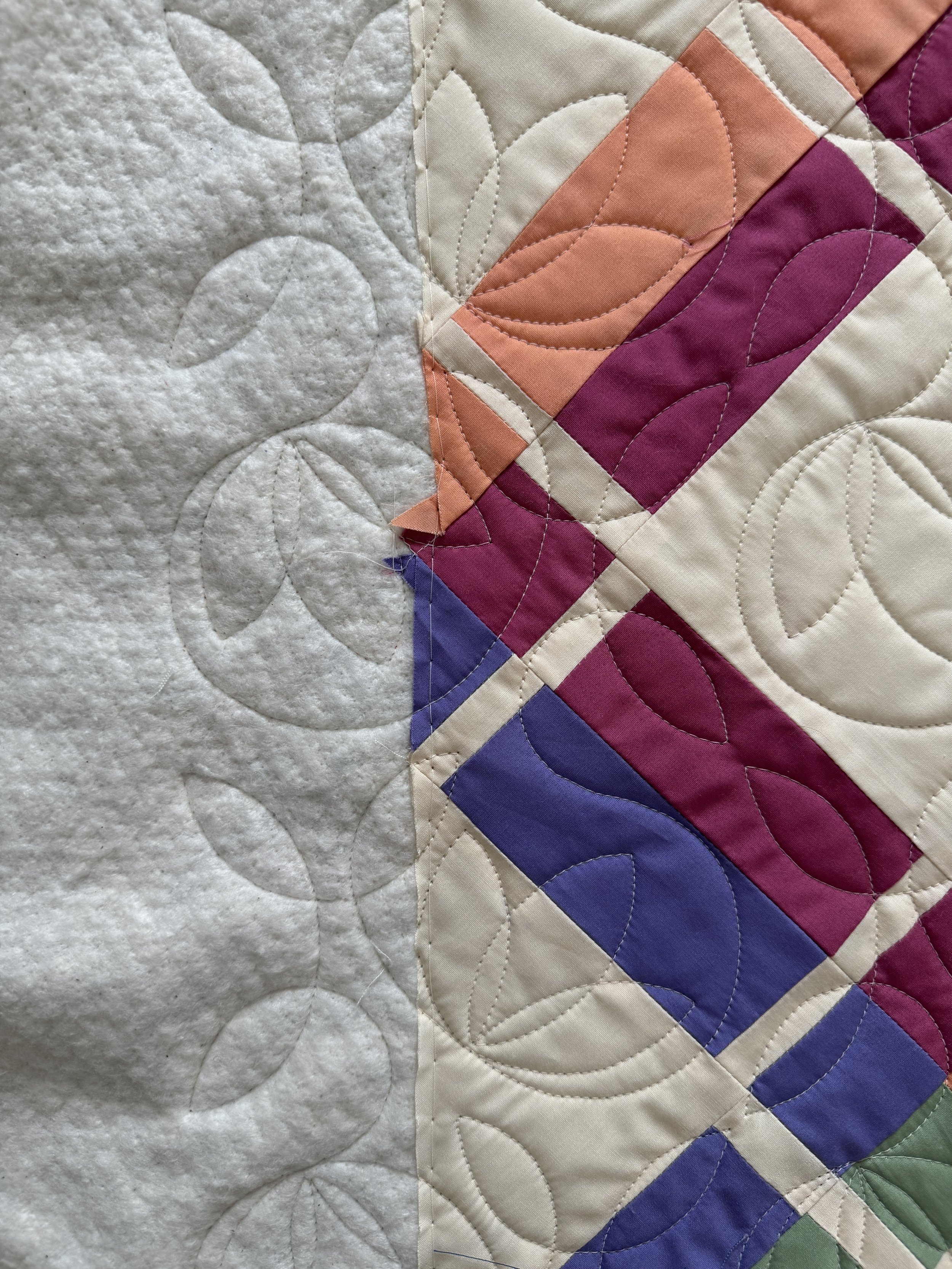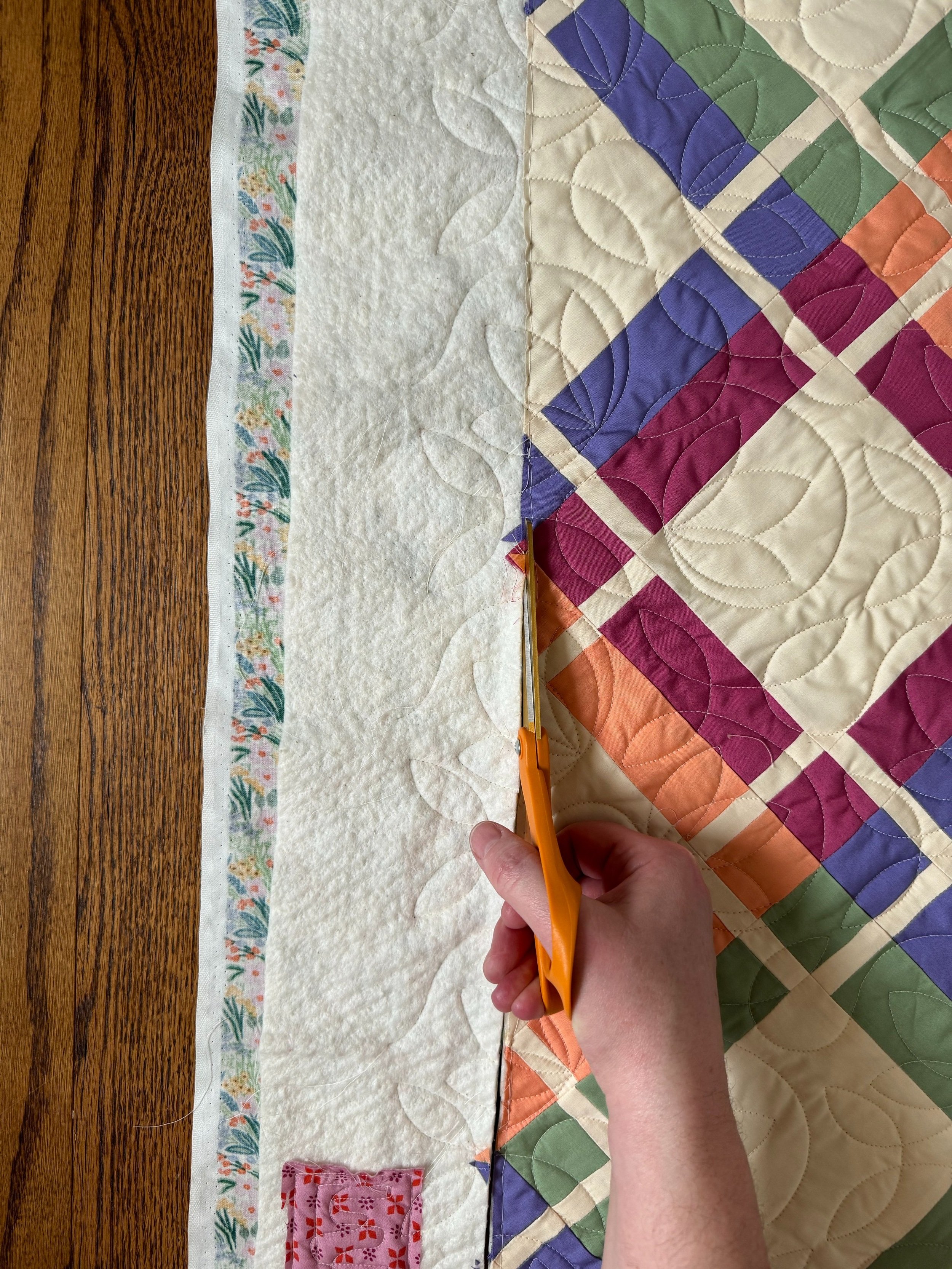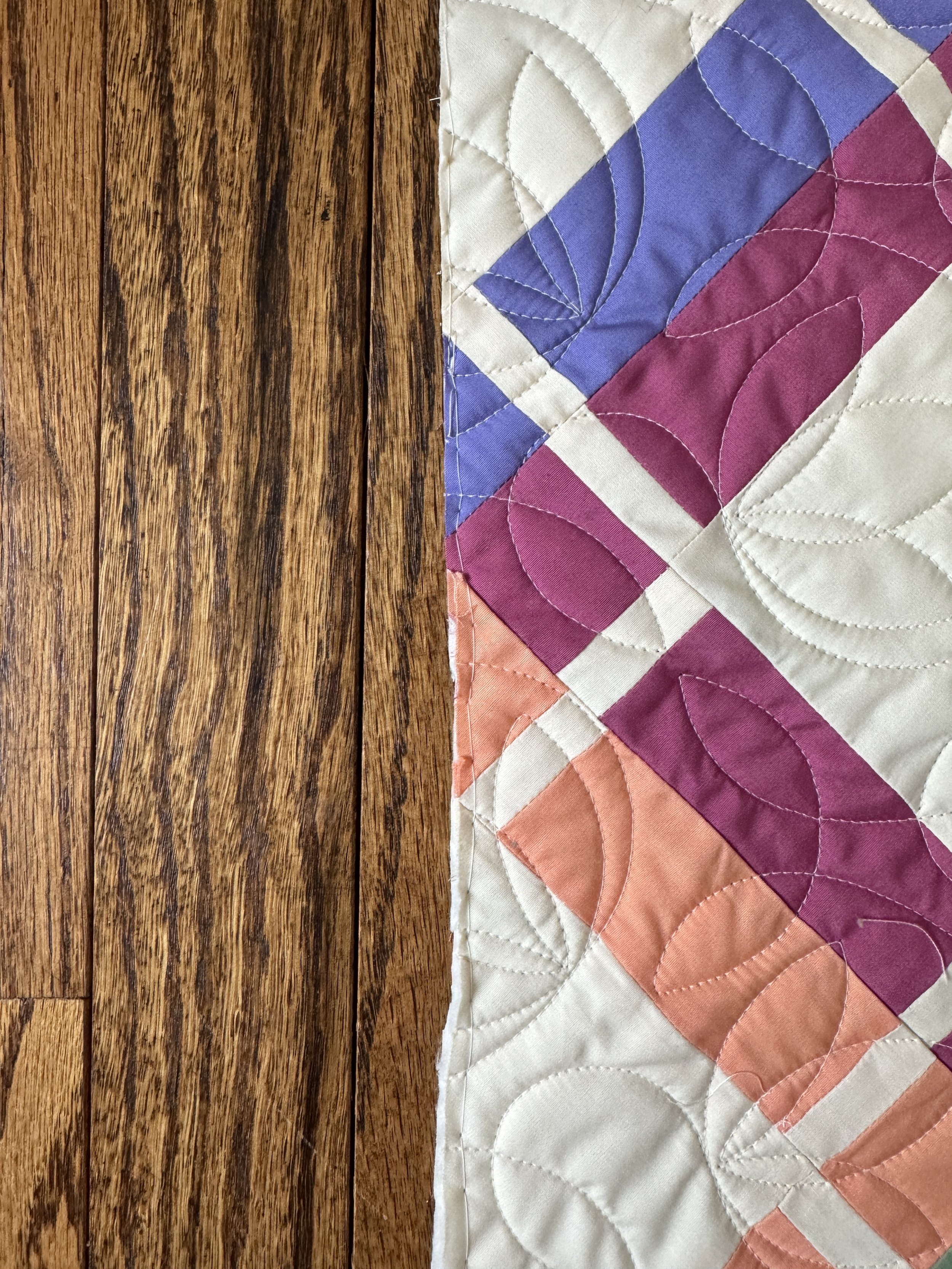Quilt Prep: Trimming and Scraps
We LOVE to trim quilts once we are done! With all the extra stuff around the sides gone we can see the final result which is very exciting. The overwhelming bulk of our customers opt into this service and it has become our default. However, there are times for each option and we’d love to tell you a bit about what’s what so you can make the best decision for your quilt.
Our options on the order form are
‘Return significant scraps’
‘Recyle/Donate Scraps’
‘Do not trim my quilt’
Let’s chat a moment about what all this means and what is the best choice for you!
First, what do we mean by trimming the quilt? When trimming a quilt, we are simply removing the extra batting and backing fabric from the perimeter of the quilt top. Unless we are easing from one wonky point/extra fabric in the quilt to another, we do not cut into the top. In the photos below, you can see an example of how we eased through a funky spot on this quilt.
IMPORTANT NOTE: I want to be clear that trimming is not the same as squaring up a quilt. Squaring a quilt often entails cutting into the quilt top or making judgement calls on what to trim which is not something we are keen on taking on. We leave that part up to you, but at least when it is trimmed it can be easier to manage that next step of squaring the quilt.
Now that I’ve defined what this service is, let’s talk about what each of your options are, what they mean, and when you should chose them for your quilt.
‘Do not trim my quilt’:
If you like to trim a little bit away from the edge of the quilt top for extra filler in the binding process.
If you intend to wrap the backing fabric directly around to the front as the binding.
If you need every possible last little scrap of fabric left over from the backing.
If you just simply like to do it yourself!
NOTE: batting that is significantly larger than needed will be trimmed to be 2-4” away from the quilt top during the quilting process to avoid it being in the way or causing issues. This extra gets recycled/donated as it is tough to keep track of and too bulky and heavy to pack or mail back. If this is not appealing to you I recommend trimming the batting to the recommended size appropriate for the quilt before sending it our way.
Recycle/Donate Scraps: For those of you who are cool with us trimming, let’s chat about the scraps. If you do not care to have anything back we are happy to donate or recycle anything that comes off the quilt. If you have a local place you would like for us to consider we are always happy to have a new source for our trimmings. Here is where these scraps have gone in the past:
Nurses for Newborns
Sew Hope and City Sewing Room in STL.
Missouri Department of Corrections for inmates creating quilts for foster children.
Locals who makes dog beds with clippings.
A friend who creates handmade unique plushes and dolls to sell.
Local artist use the batting in packing fragile items for shipping.
My local guild’s free table.
Return Significant Scraps: Let’s start by defining ‘significant scraps’. First, we are not talking about batting. Batting is bulky and heavy and we do not include it in our return packing or shipping. If you want batting from TCQ, please reach out. I’m more than happy to accommodate you, but it is not our default. Second, as you may have read from our post about the proper size of your backing fabric, those 8” of extra backing fabric should be thought of as our seam allowance to use as needed and should not be expected to come back. Lastly, ‘significant’ to us means 3-4” or more of usable fabric. Smaller pieces than that go in to our recycle or donate bins. If this makes you cringe then I refer you back to the ‘Do not trim my fabric’ option.
At TCQ, we are very aware of the cost of fabric and the value of having scraps returned. We know from personal experience and customer feedback that you would much rather have one or two larger chunks of scraps than lots of little ones. When you check the box on your order form for us to ‘return significant scraps’, we take that seriously. We will evaluate the backing, quilt top, and pantograph chosen. As we evaluate how to align a top on the backing so we have enough room to maneuver properly, we also factor in how to salvage the largest possible pieces of fabric.
So for instance, if a quilt is 60” and we receive backing that is two WOF untrimmed (approx. 84”) I’ll scoot the quilt top as much as possible so we can return a cut of fabric close to 18-20” wide. Cool? Cool.
Below you can see that finished trimmed quilt - isn’t it fun to see it all ready for that final step? It’s honestly my favorite moment in the longarming process. I think that covers everything we hoped you would learn in this post. If you have any questions do not hesitate to reach out!
-Lilo










